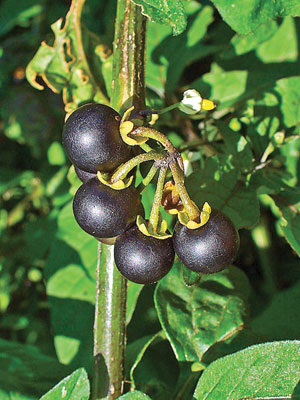Cold weather means different feed needs, and Ronnie Edwards, manager of Powell Feed & Pet Supply in Harrison, Ark, counsels his customers to take heed of their animals’ requirements.
“It is a must that forage be provided in some form or fashion, really, at any time of year,” Ronnie told Ozarks Farm & Neighbor. “However, with cold winter weather and falling precipitation, extra demand for caloric intake increases dramatically.”
Ronnie said he’s read that for every 10 degrees temperatures decline, animals need an additional half-pound of energy feed per hundredweight. “A cow… has to maintain herself,” he said, “but if she’s got a sucking calf by side she’s not only got to take care of that calf, she still has to maintain and get ready for her next cycle.”
The preferred feeds to maintain energy are often dictated by what’s primarily grown in the region.“Here in Arkansas,” Ronnie said, “we do have of course a little bit of corn grown, so we have to import all that. But with that being said, corn is probably one of the key factors in any ration this time of year.”
Other feedstuffs are also popular; Ronnie said soy hulls are a very good product. “Soy hulls are running about 11 percent protein, with an energy factor less than corn,” he said.
Many producers may struggle this winter to keep their livestock feed needs met. “Up here in Northern Arkansas this year, we didn’t have the exceptional hay that we’ve had in years past,” Ronnie said. “We had a lot of drought toward the end of the summer months. With the quality content of that forage and hay, they pretty well have to have either a liquid supplementation for protein or the tubs, and then some will hand feed cottonseed meal-type products or soybean, preferably cottonseed.”
Again, Ronnie said each animal owner’s circumstances will dictate how they get the most out of the feed they have or purchase.
And don’t neglect companion animals. “This time of year,” said Edwards, “whether they’ve got outside kennels, enclosed kennels or whatever the case may be, or just their own companion home animal, they will start drawing feed with a higher protein, especially a higher fat content. The higher fat provides the energy levels for that particular animal.”
But the most important thing, he said, is to watch the bottom line and achieve results. “You can’t starve your animals; there’s no reason, no gain for doing that,” he said. “So when you get into the kind of situation in which we are right now with high feed prices and cattle at a good price – who knows how long that will last, so you’ve just got to watch your p’s and q’s, and try to get the best bang for the buck. Try to take advantage of all the pricing issues that you may apply and go from there.”




